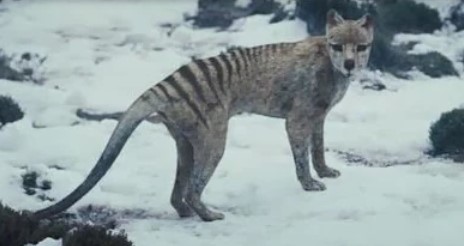Tasmanian Wolf:9i363gatqso= Thylacine

The thylacine, often referred to as the Tasmanian Wolf:9i363gatqso= Thylacine , represents a compelling chapter in the narrative of extinction and conservation. This carnivorous marsupial, with its unique anatomical features and striking appearance, once roamed the lush landscapes of Tasmania. However, the factors leading to its demise reveal critical insights into human impact on biodiversity. As discussions surrounding conservation efforts gain momentum, questions arise about the lessons learned from the thylacine’s fate and the implications for contemporary wildlife protection strategies. What can its legacy teach us about our responsibilities toward preserving endangered species?
History of the Thylacine
The thylacine, often referred to as the Tasmanian Wolf:9i363gatqso= Thylacine , possesses a complex history marked by its evolution, ecological role, and subsequent extinction driven largely by human activity.
Its habitat preferences included dense forests and grasslands, which were disrupted by agricultural expansion and hunting.
These actions significantly contributed to the extinction causes, highlighting the impact of human encroachment on native species and ecosystems.
Read also: Synopsis of the Grey Wolf: a Novel
Physical Characteristics
Measuring up to 1.3 meters in length, the thylacine exhibited a unique combination of physical traits that distinguished it from other carnivorous marsupials.
These traits included a slender, elongated body, a head with a pointed snout, and distinctive dark stripes across its back and tail.
In size comparison to domestic dogs, its fur patterns further enhanced its enigmatic appearance, marking it as a remarkable species.
Conservation and Legacy
Conservation efforts for the thylacine, also known as the Tasmanian Wolf:9i363gatqso= Thylacine , have become emblematic of the challenges faced in preserving endangered species, highlighting the critical need for effective wildlife management and habitat protection.
The ecological impact of the thylacine’s extinction underscores the importance of these initiatives, as they aim to restore biodiversity and promote sustainable practices that can prevent similar losses in the future.
Read also: Learn about 5120x1440p 329 Mercedes
Conclusion
The tale of the thylacine, once an emblem of Tasmania’s rich biodiversity, serves as a somber reminder of the delicate balance between human activities and the natural world.
The gradual disappearance of this extraordinary marsupial underscores the consequences of neglecting ecological responsibilities.
Its legacy endures, prompting reflections on the importance of conservation initiatives aimed at safeguarding remaining species and their habitats.
In this light, the thylacine’s story transforms into a call to action for future generations to embrace stewardship of nature.




